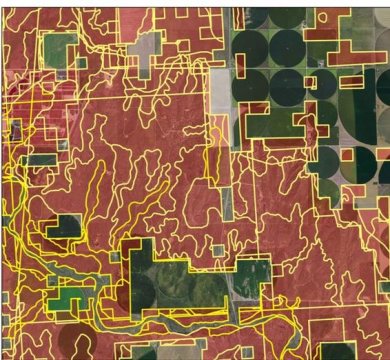Mar
8
A New Look At Switchgrass Fed Biofuel
March 8, 2018 | 1 Comment
Over the past thirty years the corn industry has driven biofuels produced from corn as a fuel source to power motor vehicles and, perhaps soon, airplanes. Meanwhile the global warming scare has driven scientists, companies and government agencies to hard work on decreasing greenhouse gas (CO2) emissions.
For those not watching the fuel markets there remains the belief that corn is problematic as a biofuel source material. The press release asserts corn is resource-intensive to grow, creates many environmental impacts, and is more useful as food. While a semi accurate, and semi false belief, the global warming scare does serve to drive alternative energy sources.
The study from Colorado State University found new information for biofuels produced from switchgrass, a non-edible native grass that grows in many parts of North America that could substitute for corn and perhaps reduce corn’s massive overabundance.
The scientists used modeling to simulate various growing scenarios, and found a “climate footprint” ranging from -11 to 10 grams of carbon dioxide per mega-joule – the standard way of measuring greenhouse gas emissions.
To compare with other fuels, the impact of using gasoline results in 94 grams of carbon dioxide per mega-joule.
We’ll take the global warming scare as a driver because the research offers some very useful results for alternative fuel production and soil building with soil conservation. If this research helps pull land from corn production to a more sustainable agricultural economy it is very important research, indeed.
John Field, research scientist at the Natural Resource Ecology Lab at CSU, said what the team found is significant. “What we saw with switchgrass is that you’re actually storing carbon in the soil. You’re building up organic matter and sequestering carbon.” Organic carbon in soil is what makes the worlds best soils better than poor soil.
His CSU research team works on second-generation cellulosic biofuels made from non-edible plant material such as grasses. Cellulose is the stringy fiber of a plant. These grasses, including switchgrass, are potentially more productive as crops and can be grown with less of an environmental footprint than corn.
“They don’t require a lot of fertilizer or irrigation,” Field said. “Farmers don’t have to plow up the field every year to plant new crops, and they’re good for a decade or longer.”

An aerial image of the research study area in southwestern Kansas. Image Credit: Colorado State University. Click image for the largest view.
The researchers chose a study site in Kansas since it has a cellulosic biofuel production plant, one of only three in the United States.
The team used DayCent, an ecosystem modeling tool that tracks the carbon cycle, plant growth, and how growth responds to weather, climate and other factors at a local scale. It was developed at CSU in the mid-1990s. The tool allows scientists to predict whether crop production contributes to or helps combat climate change, and how feasible it is to produce certain crops in a given area.
Previous studies on cellulosic biofuels have focused on the engineering details of the supply chain. These details have included analyzing the distance between the farms where the plant material is produced, and the biofuel production plant to which it must be transported. However, the CSU analysis finds that the details of where and how you grow the plant material is just as significant or even more significant for the greenhouse gas footprint of the biofuel, said Field.
The biofuel industry is experiencing challenges, due to low oil prices. The production plant referenced above has new owners and is undergoing a reorganization.
But, Field said, the future looks bright for biofuels and bioenergy.
“Biofuels have some capabilities that other renewable energy sources like wind and solar power just don’t have,” said Field. “If and when the price of oil gets higher, we’ll see continued interest and research in biofuels, including the construction of new facilities.”
For now these kinds of researching efforts are far and few between. The corn industry has closed the supply gap with mountains of corn going unused, the petroleum industry has closed the oil and gas supply gap with huge supplies of petroleum fuels. Both industries are reeling form very low prices that have caused job losses, business closings and bankruptcies. The petroleum industry is nearing the end of the tunnel while agriculture has a way to go.
Breaking the sugars out from cellulose materials has made improvements. But the real test might come at the top of the next fuel price cycle. Can the cellulosic raw materials and processes get some market share and survive the next fuel cycle low price period?
As the CSU press release noted, the cellulosic plant didn’t get through the last low price range of the fuel cycle. Perhaps this research will help get breakeven on production worthwhile even with very low prices.
Comments
1 Comment so far


If this is something that will be used around the world then this would be great!